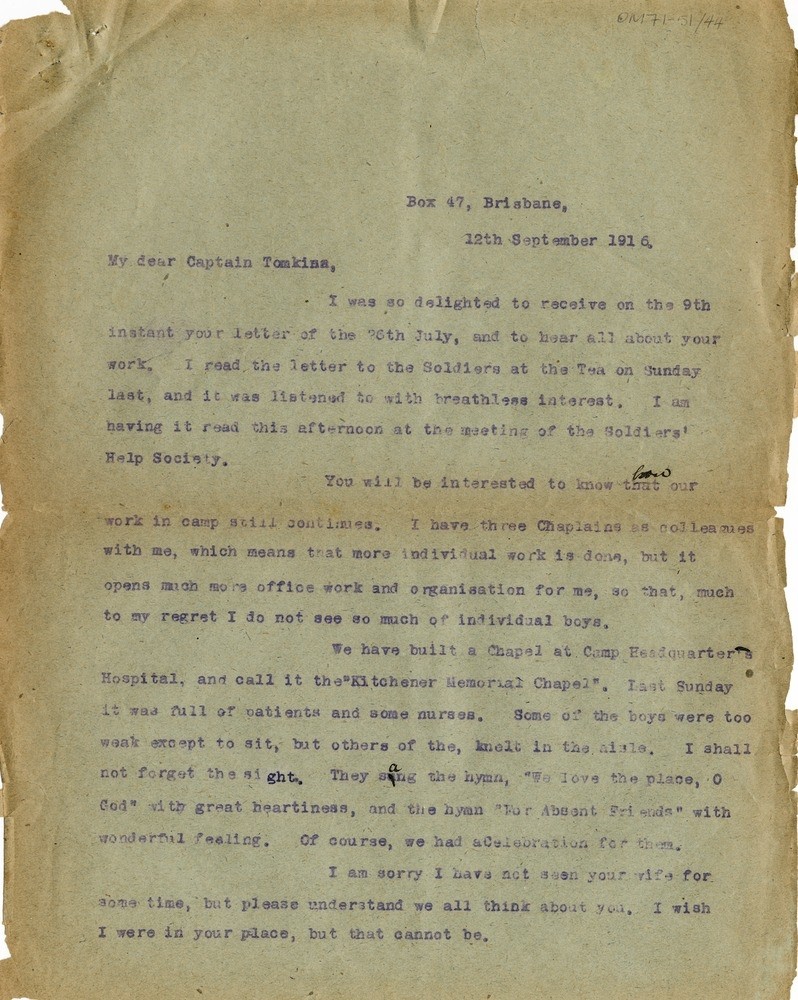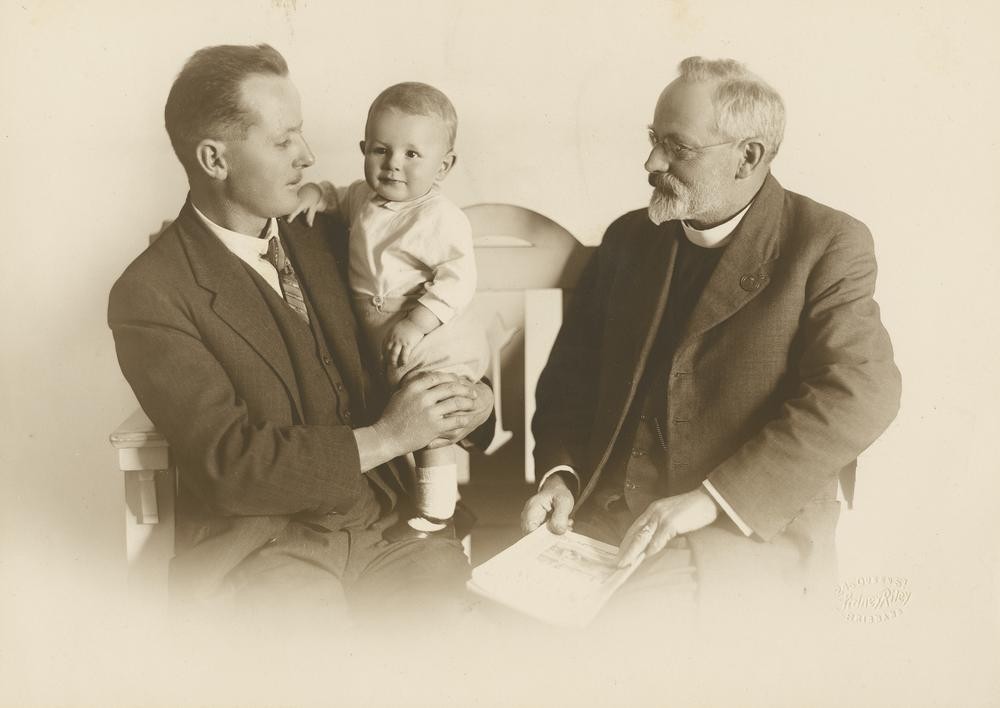
Canon David John Garland, 28069 Garland Family personal papers and photographs, State Library of Queensland Image 28069-0001-0003
As senior army camp chaplain in Queensland 1914-17, Anglican clergyman Canon David John Garland experienced the First World War both at home and at the front.
Born in Dublin in 1864, Garland is described in the Australian Dictionary of Biography as 'overpoweringly energetic with a distinctive flair, if not genius, for organisation'. He played a pivotal role in the Queensland experience of the war, and was a central figure in a variety of committees and organisations established to aid the war effort and support or commemorate serving or returned soldiers.

Portrait of a young David John Garland. 28069, Garland Family personal papers and photographs, State Library of Queensland. Image 28069-001-0004
In 1902 Garland became rector of Charters Towers, a canon of St James Cathedral, Townsville and was appointed archdeacon of North Queensland in 1903. At the outbreak of war he was in Brisbane, and served as chaplain to soldiers in training camps, as they prepared for active service overseas.
Long a crusader for religious education in schools, Garland devoted much energy to the Bible in State Schools League in Queensland, and he redirected this energy to provide Bibles and prayer books to Queensland soldiers at the front.

Letter from Canon Garland in Brisbane to Chaplain Captain C Warren Tomkins, at No.2 A General Hospital, North France. Garland mentions the Soldier's Help Society, and the building of the Kitchener Memorial Chapel at Camp Headquarters Hospital. OM71-51, Canon David John Garland papers, State Library of Queensland
In 1915 he founded the Soldiers Help Society, and as an ardent supporter of conscription, co-founded the Compulsory Service League. He also travelled the state as honorary organizing secretary of the Queensland Recruiting Committee, preaching to encourage greater enlistment.

Official recruiting team during a recruiting rally ca. 1915. APE-20 Photograph Album of Recruiting Rallies 1914-1918, State Library of Queensland.
Garland is perhaps most remembered as an architect and originator of Anzac Day ceremonies. As honorary secretary of the Anzac Day Commemoration Committee, he initiated the Anzac Day march, the two minutes silence, the wreath-laying ceremonies and special church services.

Military parade on the first Anzac Day anniversary in Brisbane, Queensland 1916. 2897, Edwards and Buchanan Family papers and photographs, State Library of Queensland
In 1917, he travelled to Egypt and served 1918-19 in the Middle East where he founded eight clubs for Australian troops, and was the first chaplain to celebrate the Eucharist in the Anglican chapel of the Church of the Holy Sepulchre following the expulsion of the Turks from Jerusalem. In addition he raised funds for memorials and hospitals, and for soldiers’ hostels and care of soldiers’ graves at home and abroad.

Letter from Sister Edith Avenell, No.3 Stationary Hospital, Boulogne, France to Canon Garland, Brisbane. She describes in detail nursing wounded Australian troops and conditions in the hospital. OM71-51/19, Canon David John Garland papers, State Library of Queensland
Returning to Queensland in 1920, Garland became rector of Ithaca and was president of the New Settlers' League from 1926. Appointed O.B.E. in 1934, he died in 1939 and was buried in Toowong cemetery.

Three generations of the Garland family. 28069, Garland Family personal papers and photographs, State Library of Queensland. Image 28069-0001-0007
State Library holds various collections of Canon Garland's papers, and earlier this year, State Library digitised the First World War letters found in the OM71-51 Canon David John Garland Papers 1915-1918; 1934. This collection consists of letters received by Canon Garland from Australian army soldiers, nurses and chaplains serving abroad during World War I, as well as carbon copies of his replies. Included are letters from his colleague The Reverend William Maitland Woods regarding the discovery, evacuation and transportation to Australia of the Shellal Mosaic. State Library volunteers have also undertaken transcription of the letters, and you can now read the transcriptions alongside the digitised letters in the collection. Some of Garland's letters are also part of the OM74-101 Maitland Woods Papers 1915-1916.
Robyn Hamilton – QANZAC100 Content Curator, State Library of Queensland
Comments
Your email address will not be published.
We welcome relevant, respectful comments.